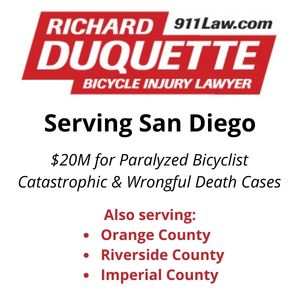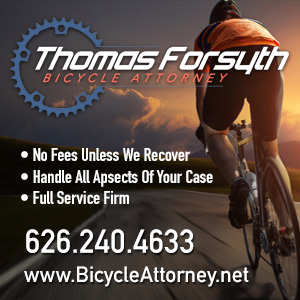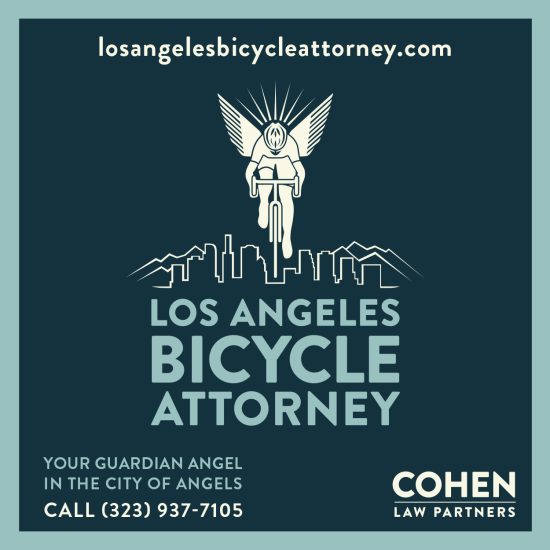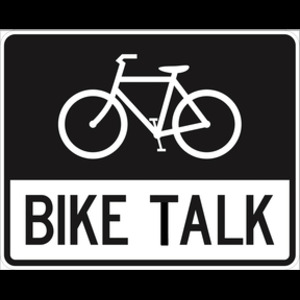
About damn time.
DA candidate George Gascón pledges he’ll reopen four police shootings that were swept under the rug by current DA Jackie Lacey, including the killing of Ricardo Diaz Zeferino by three Gardena cops seven years ago.
Zeferino was the unarmed, Spanish-speaking brother of a bike theft victim who was fatally shot as he tried to tell the trigger-happy cops that the men they had detained weren’t thieves, but had been helping the victim look for his stolen bike.
Lacey inexplicably ruled that the shooting was justified, because Zeferino gestured as he as speaking, and failed to understand the orders shouted to him at gunpoint in English.
At last report, all three officers were still working as Gardena cops, without so much as a slap on the wrist.
Which is more than enough reason to give my vote to Gascón.
………
Ted Faber reports there are new bike lanes on Manchester Blvd.
………
A writer for Bike Magazine pens a challenging piece on the question of race, saying when you’re black, “just ride” isn’t an option.
When conversations about race within the cycling industry come up, white cyclists often say things like, “The trail/bike/biking doesn’t care what color you are … just ride.”
When I’m feeling generous, I can write this off as naiveté. When I’m being brutally honest, I understand this as a dangerous distraction from the real issue.
For many white cyclists, the bike is often separate from their sociopolitical lives; it’s a means of escape, a recreational machine reserved for fitness or fun.
For many BIPOC cyclists, the bike is a tool that is intimately connected to the way we experience the world.
For those of us who are white, it’s impossible to know what it’s like to experience our streets as a person of color, unless we take the time to actually listen.
Pieces like this may not celebrate the world of bicycling that we know and love.
But they are vitally important to make riding a bike, and our world, more inclusive for everyone.
………
Here’s your chance to enter Dutch academia, while working on the science of bicycling.
https://twitter.com/moorepants/status/1310513496774397952
Thanks to Megan Lynch for the forward.
………
Pink Bike offers tips and tricks on how to set up your new bike.
………
The war on cars may be a myth, but the war on bikes is all too real.
Portland bike riders were subjected to an illegal checkpoint by armed men representing the Proud Boys hate group. Yet another example of the dangerous times we’re living in. Thanks again to Megan Lynch.
Earlier in Delta Park, some yelled ‘get him’ to a bicyclist passing through and then pursued and stopped and harassed him – before letting him pass thru pic.twitter.com/I5KUReLQ0R
— Maxine Bernstein (@maxoregonian) September 26, 2020
No bias here. After a Texas driver was confronted by a bike rider enraged by his close pass, he responded by suggesting that a) bike riders should be licensed, b) bikes are too slow to be allowed on roads, and c) bike cops should get tickets for not signaling their turns. Apparently d) maybe he should try driving a little more safely next time never crossed his mind. (Scroll down)
But sometimes, it’s the people on two wheels behaving badly.
Police in Idaho are looking for a major scumbag who used his bike to make a teenage girl fall off hers on a bike path, then groped and threatened her until an approaching rider frightened him off.
………
Local
Culver City continues to leap past Los Angeles in repurposing the streets, including a new protected bike lane on Washington Blvd. Although it seems to be best protected from pedestrians and diners, with only thin plastic bollards to keep the cars away.
State
You’ve got to be kidding. After a Paso Robles bike rider suffered back and leg injuries when he was hit by a car, the local police were quick to blame the victim and stress that he wasn’t wearing a helmet. Which wouldn’t have done a damn thing to prevent his injuries even if he had been.
Bay Area residents are celebrating the governor’s signing of SB 288, which streamlines bike and transit projects by exempting many projects from the environmental reviews that were too often used as a cynical tool to stop them. We should be celebrating that one down here, too.
National
Streetsblog says a surprising number of cities don’t even bother to map out the streets on their High Injury Network. At least Los Angeles does that much, although after four years, it could probably stand to be updated.
A writer for Green Biz says now is the time to reimagine public transportation, including recognizing that streets aren’t just for cars.
Bicycling offers a mathematically challenged list of five things you should do after falling off your bike. I count seven myself, but I was an English major. Here’s the Yahoo link if you’re blocked from the Bicycling site.
The body of an Aspen CO man was found near a local bike trail after he’d gone missing over the weekend, when someone spotted his John Deere bike on the path.
When a Forth Worth, Texas high school student’s bicycle was stolen, the school’s football team pitched in to buy him a new one.
After an Illinois man returned from shopping to find his bike had been stolen, support poured in from kindhearted people, raising $400 in the first ten minutes; the crowdfunding campaign is now up to over $1,500.
A Massachusetts Streetsblog op-ed wonders whether the Covid-inspired bike boom will continue, saying we have a real opportunity to create a “safer, more resilient, and more equitable transportation future.”
The Wall Street Journal appears to tell the story of a digital advertising salesman who rode the crest of the bike boom with a used bike business after losing his job. But we may never know, since it’s blocked by the paper’s draconian paywall. And there’s no Yahoo mirror site for the Journal.
After a Florida fundraising ride to fight childhood cancer was canceled due to the coronavirus, a bighearted Florida cop set out on a 1,000-mile solo journey to call attention to the disease.
International
Add a Jamaican bicycle tour to your bike bucket list.
Oh, well if that’s all. A Welsh driver got 42 months behind bars for fleeing the scene after killing a bike rider, claiming he was tired from partying on coke with a pair of prostitutes.
A new Korean dual beam bike light promises bright illumination without blinding people coming from the opposite direction.
A Japanese man beat a bike theft charge after convincing the judge that he was only borrowing the bike without permission. Repeatedly.
Competitive Cycling
Cycling greats and former dopers Ivan Basso and Alberto Contador have teamed up to introduce a new bike line, starting with a UCI-legal road-racing bike. No word on whether you need to consume clenbuterol-tainted meat or attempt blood doping to ride it. But hey, the era of doping is over, right? Here’s the Yahoo link for the Bicycling banned.
VeloNews examines the disastrous front end wobble that sent American Chloé Dygert over a guardrail and down an embankment at the road worlds.
Two of the three remaining stages of the BinkBank Tour in the Netherlands have been cancelled due to a surge in Covid-19 cases.
Finally…
Take your coffee with you when you ride — and sell it along the way. Probably not the best idea to crash into the mayor with your e-scooter.
And the perfect bike for people with more dollars than sense.
Even if it is for a good cause.
https://www.youtube.com/watch?v=SSNXGbZlZAo&feature=emb_logo
………
A special thanks to Margaret W and Dennis E for their generous contributions to help support this site. And thanks to Terry E for his kind words yesterday. That’s what keeps me going these days.
………
Be safe, and stay healthy. And wear a mask, already.

























